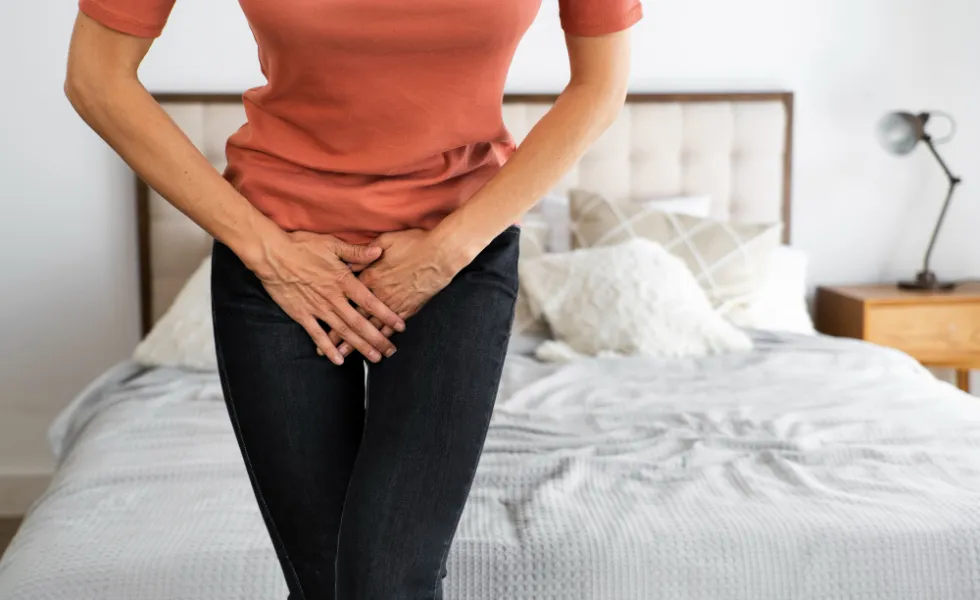Genitourinary Syndrome of Menopause (GSM) affects vaginal and urinary health due to reduced estrogen. Common in postmenopausal women, it causes dryness, pain, and discomfort.
Dear Women,
Genitourinary Syndrome of Menopause (GSM) is a topic that’s essential for you to understand. It pertains to chronic conditions that affect your urinary tract, vulva, and vagina due to reduced oestrogen levels during menopause. Coined in 2014, this term replaced older designations like vulvovaginal atrophy or atrophic vaginitis.
Prevalence of GSM:
This is important for you to know: GSM primarily impacts older women, with 50-70% of postmenopausal women displaying GSM symptoms. Interestingly, even 15% of younger, premenopausal women might encounter similar symptoms, often linked to surgery or hormonal imbalances. Sadly, GSM frequently goes unnoticed as women might refrain from seeking assistance due to embarrassment or misconceptions that these symptoms are a natural part of ageing.
Factors Leading to GSM:
Ladies, besides natural menopause, several factors elevate the risk of GSM. These include; No previous vaginal childbirth, alcohol misuse, ovary removal surgery, decreased sexual activity, smoking, lack of exercise, and health conditions affecting the urinary and genital tracts. Recognising these factors is important as it helps in identifying individuals prone to developing GSM, enabling appropriate interventions.
GSM Development Process:
A decline in oestrogen during menopause affects oestrogen receptors in the urinary system, vulva, and vagina is and this is crucial knowledge in understanding the development of GSM. This decline leads to changes like thinner and less elastic tissues, altered muscle activity, reduced blood vessels, increased connective tissue, and thinning of vaginal skin layers.
Symptoms of GSM:
GSM manifests through symptoms that affect your vaginal health, sexual life, and urination. Some common problems include:
- Dryness in the vagina
- Itching and discomfort in the vagina
- Pain during sexual intercourse (dyspareunia)
- Insufficient lubrication during sexual activities
- Bleeding post-sex (post-coital bleeding)
- Decreased sexual arousal and libido
- Difficulty in achieving orgasm
- Painful urination (dysuria)
- Urgency in urination
- Stress/urge incontinence
- Recurring urinary tract infections
Prevalence of Symptoms:
Ladies, it’s important to note that vaginal dryness becomes more common with age. It affects about 4% of women during early peri-menopause, 25% a year after menopause, and 47% three years post-menopause. The severity varies, with vaginal dryness and painful sex often causing the most distress.
Impact of GSM:
Symptoms of GSM can significantly affect your overall quality of life, as well as your relationships and social interactions. Unlike certain menopausal symptoms that tend to improve over time, GSM symptoms endure and might worsen without treatment. This can lead to decreased self-assurance, intimacy challenges, and even avoidance of sexual activity.
Diagnosing GSM:
Navigating GSM can be complex, as symptoms might be vague in approximately half of post-menopausal women. Physicians rely on medical history and physical examinations, particularly for peri- or post-menopausal women or those with low oestrogen levels.
Managing GSM – Symptoms and Treatment Choices:
You should know that the primary goal of treating GSM is to alleviate symptoms and enhance the quality of life. Treatment options depend on the severity of symptoms.
Non-Hormonal Alternatives:
Lifestyle Adjustments: Opt for emollients rather than soap or plain water for washing. Strive to maintain sexual activity using lubricants as described below, quit smoking, and steer clear of irritants like perfumed products, non-cotton underwear, and antibacterial cleansers that can disrupt the natural vaginal balance. All these measures can greatly alleviate symptoms.
Lubricants and Moisturisers: Over-the-counter vaginal lubricants with water, silicone, or oil bases provide rapid relief from dryness and discomfort during sex. Bio-adhesive vaginal moisturisers boost moisture and comfort. Recommended brands include Yes (offering a range of vaginal moisturisers and lubricants), Sylk (a reliable lubricant), and Replens (an accessible over-the-counter moisturiser in the UK).
Physiotherapy: Vital for addressing pelvic floor dysfunction, discomfort, or urinary symptoms. Pelvic floor physiotherapists offer training and relaxation techniques.
Hormonal Therapy:
Systemic HRT (Oestrogen-Containing Medications): Hormone therapy involving oestrogen stands as the standard approach for moderate to severe symptoms. This is given to women who are struggling with other perimenopausal or menopausal symptoms alongside GSM. It is called systemic as it is absorbed into all the organ systems of the body. It can be administered orally or via the skin alongside Progesterone for women who have womb tissue.
Intravaginal Oestrogen: Vaginal tablets or creams are often favoured due to their efficacy for women struggling with only GSM. Low-concentration intravaginal oestrogen treatments effectively alleviate symptoms like dryness, itching, and painful sex. These treatments enhance vaginal texture, natural lubrication, and restore normal pH levels. They can be used alone or alongside systemic HRT. Clinical trials suggest minimal systemic absorption, reducing cancer and cardiovascular risks. Caution is advised for patients with oestrogen-sensitive cancers.
Emerging Therapies:
Vaginal Laser Ablation (VLA): A specialised treatment creating tiny abrasions in the vaginal wall to stimulate new blood vessel growth, temporarily enhancing the appearance of vaginal tissues. However, this approach is considered short-term as the absence of oestrogen can result in symptom recurrence.
Intravaginal Dehydroepiandrosterone (DHEA): Elevates oestrogen levels in the bloodstream, enhancing sexual desire and restoring libido.
Oral Selective Oestrogen Receptor Modulator (Ospemifene): A newer GSM treatment option. This treatment is sometimes recommended for individuals who may struggle with inserting localised oestrogen into the vagina.
Conclusion:
Dear Women, GSM, stemming from decreased oestrogen levels during menopause, leads to challenges across various genitourinary areas. Its symptoms exert physical and emotional impacts on you. Timely diagnosis and proper management are crucial for enhancing your lives. If you experience these symptoms, consulting a health professional is strongly advised.
With love,






